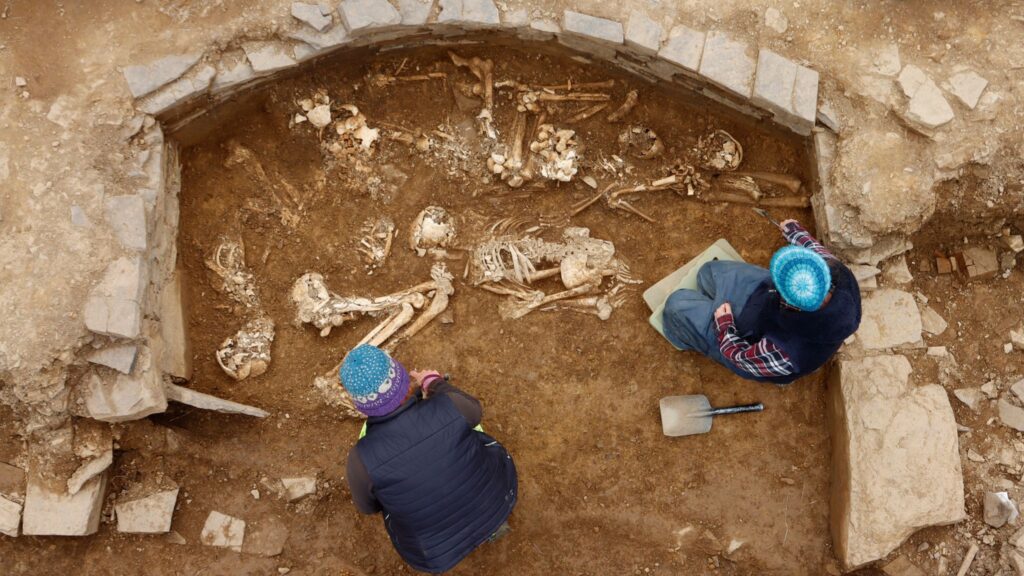Neolithic Site Offers Valuable Insights into Ancient Burial Practices and Architecture.
24 October,2023.
In a remarkable archaeological discovery, experts from National Museums Scotland and Cardiff University, supported by volunteers and students from the University of Central Lancashire, have unveiled the remains of an extraordinary 5,000-year-old tomb in Orkney, Scotland. The site, located at Holm on the mainland, was unearthed during a three-week excavation, revealing a wealth of historical treasures that provide a unique glimpse into ancient burial practices and architectural achievements.
The tomb, classified as a “Maes Howe-type” passage grave, stands as one of only twelve such tombs known in Orkney, including notable sites like Maes Howe, Cuween, and Quoyness. These tombs are considered the “pinnacle of Neolithic engineering” in northern Britain, showcasing the advanced capabilities of our ancient ancestors.
Within the tomb’s concealed chambers, archaeologists made a fascinating discovery: fourteen articulated skeletons of men, women, and children. These remarkably preserved remains offer a window into the lives and customs of the Neolithic people who lived in this region five millennia ago. To enhance our understanding of the tomb’s history, additional human bones were found following a meticulous search for its precise location.

The excavation also unveiled a treasure trove of artifacts, including pottery, stone tools, and a bone pin. These items not only shed light on the daily lives of the Neolithic inhabitants but also reflect their artistic and technological achievements.
The significance of this discovery extends beyond mere historical interest. The tomb’s features include a massive cairn, measuring over 15 meters in diameter, which encased a stone structure accessible through a 7-meter-long passage. At the heart of the cairn, a stone chamber was found, surrounded by six smaller side cells, each originally boasting corbelled stone roofs. These architectural elements reveal the ingenuity and craftsmanship of the people who built this structure.
The history of the Neolithic site at Holm was long shrouded in obscurity, as it had been buried beneath a pasture field. Its demise dates back to the late 18th or early 19th century when it was largely obliterated without record, providing building stone for a nearby farmhouse. In 1896, a breakthrough came when the farmer’s son discovered eight skeletons at the site, alongside traces of walling, a stone macehead, and a ball. This discovery piqued the interest of local antiquary James Walls Cursiter, who speculated that the site was a ruined tomb, ultimately leading to the 2023 search.
This remarkable find underscores the importance of preserving historical sites for future generations to learn from. It also reinforces the significance of ongoing archaeological research in unlocking the mysteries of our past. As experts continue to study the Holm tomb and its contents, we can anticipate a deeper understanding of the Neolithic era and the remarkable achievements of the people who lived during that time.
Resources:
3.https://metro.co.uk/2023/10/24/scotland-rare-5000-year-old-neolithic-tomb-found-on-orkney-19710535/